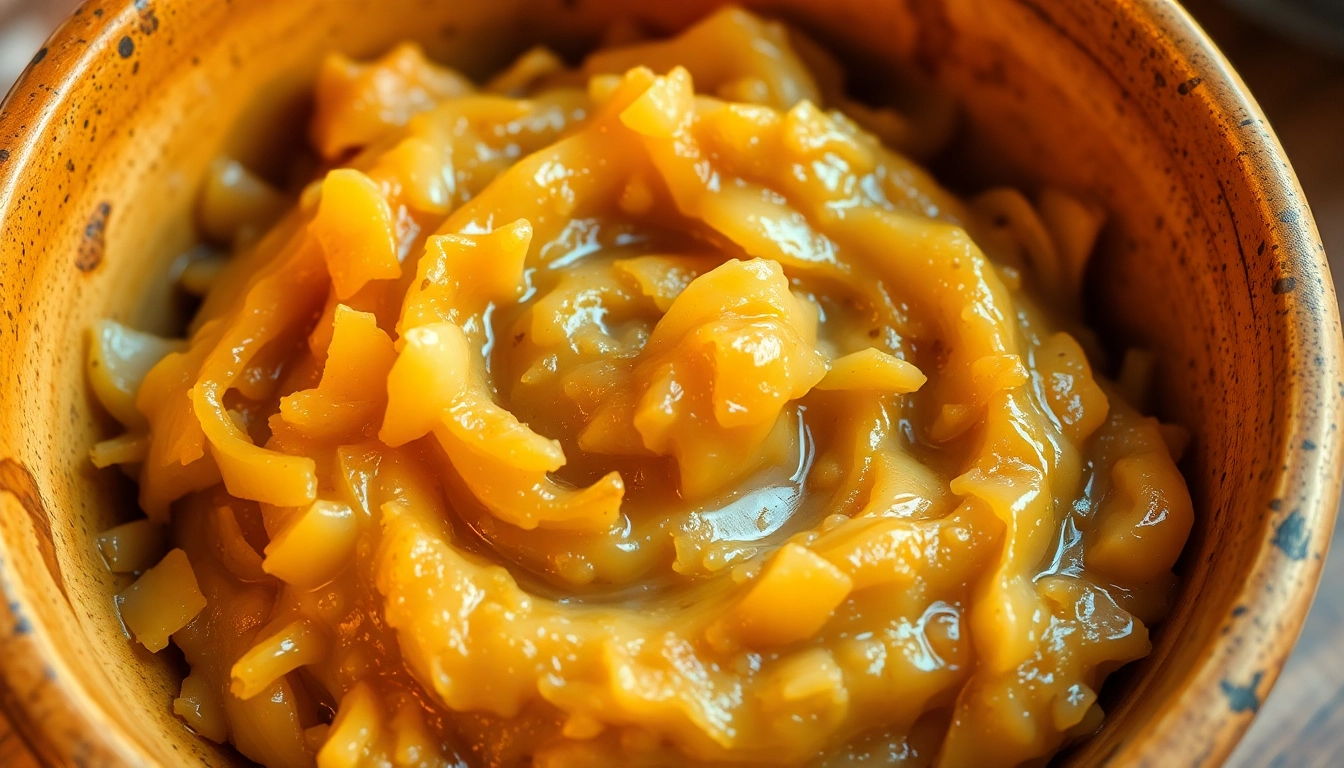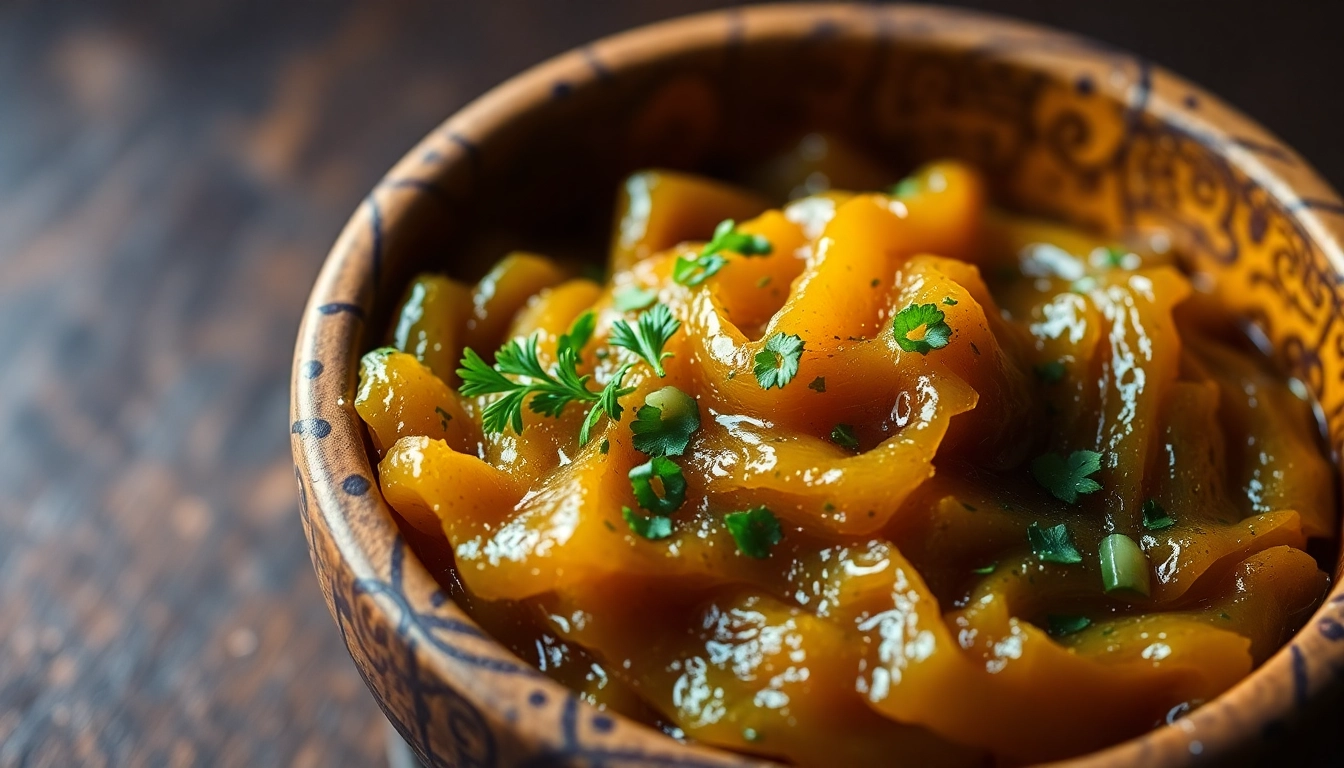Introduction to Sauteed Onion Paste
Sauteed onion paste is a foundational ingredient in countless culinary traditions worldwide. It is made by slowly cooking onions until they develop a rich, caramelized flavor and then blending them into a smooth paste. This paste not only enhances the depth and complexity of dishes but also adds a natural sweetness and umami that elevates the overall taste profile. Sauteed Onion Paste is particularly valued for its versatility, serving as a base for curries, gravies, marinades, and even dips. Its significance lies in its ability to transform simple ingredients into gourmet experiences, making it an essential component for both home cooks and professional chefs.
Understanding why sautéed onion paste matters involves appreciating its role in creating layered flavors and its convenience. Pre-prepared or homemade, it reduces cooking time and ensures consistency across dishes, especially in large-scale food production or commercial kitchens. As a professional manufacturer and exporter of authentic food products, Spice Nest recognizes the importance of high-quality onion pastes and offers premium options crafted to meet international standards, earning certifications acknowledged at major food expos worldwide.
Preparing Perfect Sauteed Onion Paste
Selecting the Right Onions for Sautéing
The foundation of a delicious sautéed onion paste begins with choosing the right onions. Generally, yellow or sweet onions are preferred due to their balanced sweetness and robust flavor that caramelizes beautifully during cooking. Yellow onions, with their higher sugar content, intensify in flavor when sautéed, creating a rich, mellow paste. Sweet onions, like Vidalia or DM, add a smooth, sweet profile that enhances the natural sweetness without overpowering. Freshness is also critical; opt for firm, medium-sized onions free from sprouting or decay.
Step-by-Step Guide to Making Sauteed Onion Paste
Creating a high-quality sautéed onion paste involves several key steps:
- Preparation: Peel and finely chop the onions to ensure even cooking and blending.
- Sautéing: Heat a suitable amount of oil—preferably refined vegetable or mustard oil—for authentic flavor. Add the chopped onions and cook over medium heat, stirring consistently to prevent burning.
- Caramelization: Continue sautéing until the onions turn golden brown and develop a sweet aroma. This process can take 15–20 minutes depending on the quantity and heat level.
- Blending: Allow the sautéed onions to cool slightly, then blend into a smooth paste using a food processor or mortar and pestle. For finer texture, strain the paste through a sieve.
- Storing: Transfer the paste into sterilized jars or airtight containers for refrigeration or freezing.
Tips for Achieving Optimal Texture and Flavor
To ensure your sautéed onion paste is consistently flavorful and smooth, consider these expert tips:
- Use high-quality, fresh onions for better flavor intensity.
- Maintain steady heat during sautéing to prevent burning and ensure even caramelization.
- Stir continuously to avoid sticking at the bottom of the pan.
- Adjust oil quantity to attain a smooth, spreadable consistency without greasiness.
- If the paste becomes too thick or dry, add small amounts of warm water or broth while blending, to achieve desired consistency.
Incorporating Sauteed Onion Paste into Recipes
Cooking Techniques for Different Dishes
Sautéed onion paste serves as an excellent flavor base across diverse culinary applications. In curries and gravies, it is added early in the cooking process, allowing its flavor to infuse the dish. When preparing stir-fries or sautés, it can be used as a starting ingredient before adding vegetables, meats, or seafood. For marinades, mixing it with spices, yogurt, and lemon juice creates a tenderizing and flavor-enhancing marinade.
Pairing Sauteed Onion Paste with Spices and Herbs
For optimal taste, pair the onion paste with complementary spices such as cumin seeds, coriander powder, turmeric, and garam masala. Fresh herbs like cilantro, mint, or basil can provide brightness, balancing the deep, caramelized notes of the onion paste. In Indian cuisine, it harmonizes with ginger, garlic, and chili to create rich, aromatic dishes. Experimenting with regional spice blends tailored to specific dishes can unlock new flavor profiles and culinary creativity.
Innovative Recipes Featuring Sauteed Onion Paste
Beyond traditional recipes, sautéed onion paste can be incorporated into modern dishes such as:
- Vegetable and poultry tacos with onion-based salsas
- Homemade burger toppings for added savory depth
- Plant-based stews enriched with caramelized onion flavor
- Flavorful dips combining onion paste with yogurt, herbs, and spices
Its versatility makes it suitable for fusion cuisine, offering a unifying ingredient that bridges diverse culinary traditions. Making use of high-quality, consistency-guaranteed onion paste from trusted suppliers like Spice Nest ensures professional-grade results in your innovative recipes.
Storing and Preserving Sauteed Onion Paste
Best Methods for Refrigeration and Freezing
Proper storage is crucial to maintain freshness, flavor, and safety. Keep the onion paste refrigerated in airtight containers, ideally consumed within 7-10 days. For longer storage, freezing is recommended. Portion the paste into small, freezer-safe containers or ice cube trays for easy use. Once frozen, transfer the cubes to labeled, airtight bags to prevent freezer burn. This method allows for precise measurement and minimal wastage.
Extending Shelf Life with Proper Packaging
Ensure that containers are sterilized and sealed tightly to prevent bacterial contamination and oxidation. Vacuum sealing can further extend shelf life by eliminating air exposure. Using moisture-proof, food-grade packaging materials is essential to preserve flavor and prevent freezer odors from infiltrating the paste.
Signs of Spoilage and When to Discard
Always inspect stored onion paste for signs of spoilage before use. Indicators include increased sour or off-odor, discoloration, mold growth, or a slimy texture. Discard any paste exhibiting these signs to ensure food safety and avoid health risks.
Health Benefits and Nutritional Aspects
Nutritional Profile of Onions
Onions are rich in vitamins C, B6, and folate, along with dietary fiber, antioxidants, and sulfur compounds. These nutrients contribute to immune support, reduce inflammation, and promote heart health. The process of sautéing gently enhances bioavailability while mellowing certain compounds, making the paste a nutritious addition to meals.
Health Benefits of Including Sauteed Onion Paste in Diet
Regular consumption of onion-based products can aid in lowering cholesterol, regulating blood sugar levels, and providing anti-inflammatory effects. The presence of quercetin, a potent antioxidant, helps combat oxidative stress. Moreover, cooking onions reduces their harshness, making them easier to digest, especially for sensitive individuals.
Addressing Dietary Restrictions and Allergies
Onion paste is generally suitable for most diets, but individuals with allium allergies or certain digestive conditions should avoid it. For those on low-FODMAP diets, options include using minimal onions or substituting with onion-flavored extracts. Ingredient transparency from quality manufacturers ensures allergen management and safe consumption.

